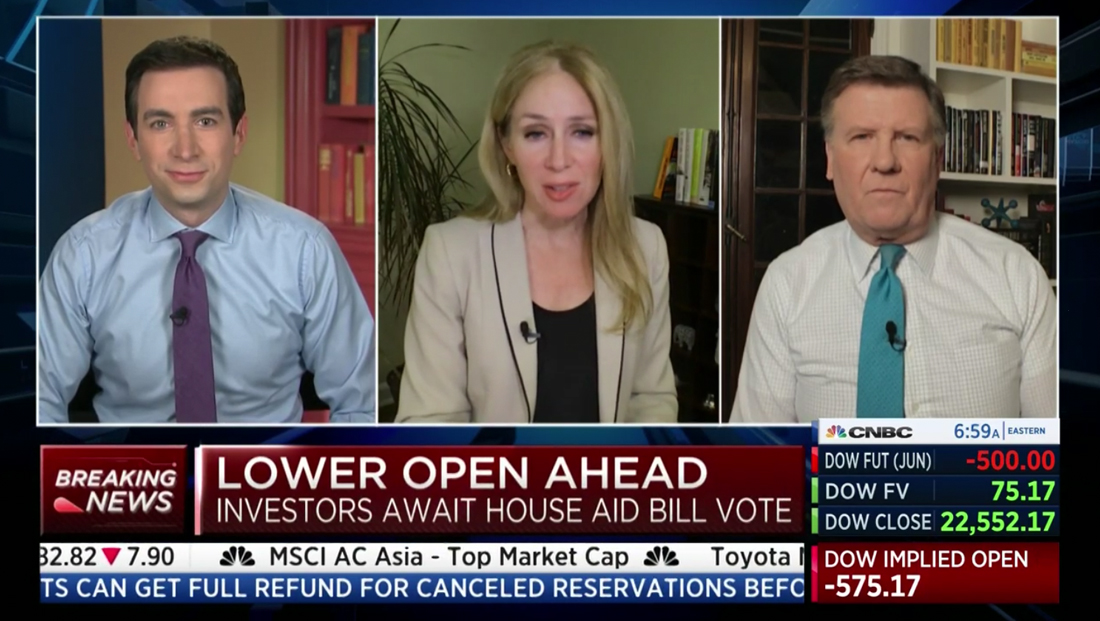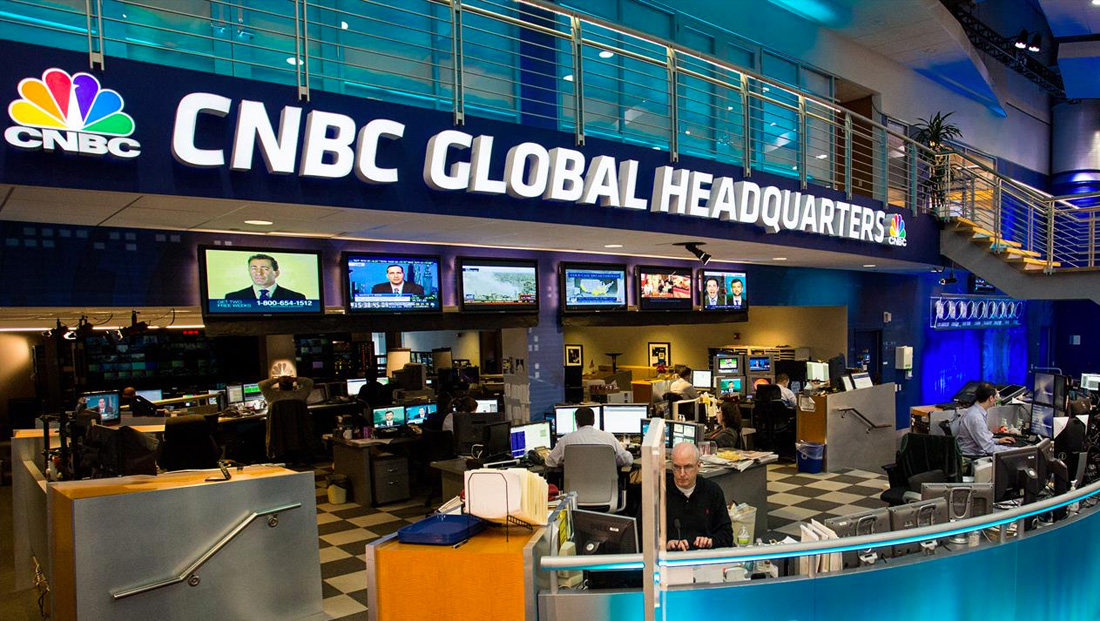How CNBC is continuing to fuel its economic reporting amid coronavirus outbreak

Subscribe to NCS for the latest news, project case studies and product announcements in broadcast technology, creative design and engineering delivered to your inbox.
During tumultuous times in the markets due to the coronavirus pandemic, CNBC’s editorial and technical teams have embarked on a variety of approaches to continue to produce 15 hours of important live coverage of the economic fallout the outbreak is causing.
The network’s global headquarters in Englewood Cliffs, New Jersey, remains open for “business essential” employees.
In order to protect its staff and comply with responsible social distancing practices, the network has closed its Los Angeles and San Francisco bureaus as well as setups at the New York Stock Exchange and Nasdaq MarketSite.

CNBC’s ‘Squawk Box‘ normally broadcasts from the Nasdaq MarketSite, as shown in this image from an October 2019 broadcast of the show. The show switched to having all three anchors join the show remotely March 27, 2020.
All employees who were based in those locations are now working remotely, the network said.
Meanwhile, Chicago and Washington, D.C. bureaus remain open with limited access.
Overall, about 80% of the network’s employees are working remotely as of March 27, 2020.
This even includes a large portion of the network’s technical staff — many of whom are working remotely and performing technical maintenance and other operations via connections to the outside whenever possible.

CNBC’s global headquarters in Englewood Cliffs, New Jersey, shown in this undated photo, remains open during the coronavirus crisis — but with a much more limited staff than what’s shown here.
Despite the limited on site staff and remote work setups, the network’s technical operations, including master control in Englewood Cliffs, are running at 100%, said Steve Fastook, senior vice president of technical operations in an email interview with NewscastStudio.
That said, in order to produce its live programming, select on air journalists, anchors and technical staff are working out of the network’s offices and studios, according to Fastook.
This includes technical directors, audio engineers, studio technicians, software engineers and systems engineers, Fastook explained in the email.
A small team of graphic designers and promotions producers are also working on site.
However, the network has taken steps to spread out these staffers’ work areas to respect social distancing guidelines, Fastook notes. In addition, any on site talent are also following these best practices — with most appearing solo on set.
Behind the scenes, about 20% of the network’s video editors are working remotely, while those working on site have been assigned their own edit rooms.
“We are also shifting our control rooms, making it easier to thoroughly sanitize the spaces after each show,” said Fastook.
The network has stepped up cleaning at its facilities, first using a “technical” cleaning firm that comes in after the broadcast day wraps.
“They do a deep cleaning of all facilities, control rooms, edit rooms, transmission, ingest and our studio desks and on air positions,” said Fastook.
These specially trained workers are assigned spaces to clean and work independently using cleaners that are safe for technical gear and finishes on studio sets.
CNBC also relies heavily on its own internal cleaning and maintenance team, work work closely with operations personnel to clean on the spot as each show completes.
“We also highly encourage all employees to clean shared spaces before and after use with the sanitizing wipes that are available in every room,” said Fastook.
Meanwhile, reporting on the volatile market depends heavily on the network’s vast team of anchors, reporters, commentators and analysts — many of whom are joining the show remotely from home or other locations.
For these setups, the network is using a full LiveU Networks setup and camera rig and teleprompter.
Return video is supplied via Padcaster using iPads equipped with the LiveU app. Apple iPod Touches are also used for prompting in some setups, according to Fastook.


CNBC contributor Scott Gottlier, right, joins CNBC’s ‘Squawk Box’ from home March 27, 2020.
Alternatively, the network can also take incoming feeds via all major video calling solutions — and has tripled its capacity for handling these.
Like most broadcasters, CNBC already had extensive plans in place for emergency facility or equipment failures resulting from weather, accidents or other unforeseen circumstances.
“That investment has yielded both geographical diversity and technical facility duplication. We are leveraging that currently to allow for work from home situations and to minimize staff needed at any one facility or location,” said Fastook.
Viewers seem to be taking the changes in stride, says Fastook.
“From phone calls and emails to our customer care team to tweets being sent to CNBC journalists directly, viewers have been offering positive feedback about our anchors and reporters broadcasting from their homes,” he said.
The home TV studio setups have also sparked a friendly competition between talent — who are trying to one up each other on creating the best home studio setup, noted Fastook.
Subscribe to NCS for the latest news, project case studies and product announcements in broadcast technology, creative design and engineering delivered to your inbox.







tags
CNBC, Coronavirus, Squawk Box
categories
Broadcast Engineering, Broadcast Industry News, Cable News, Featured, Heroes